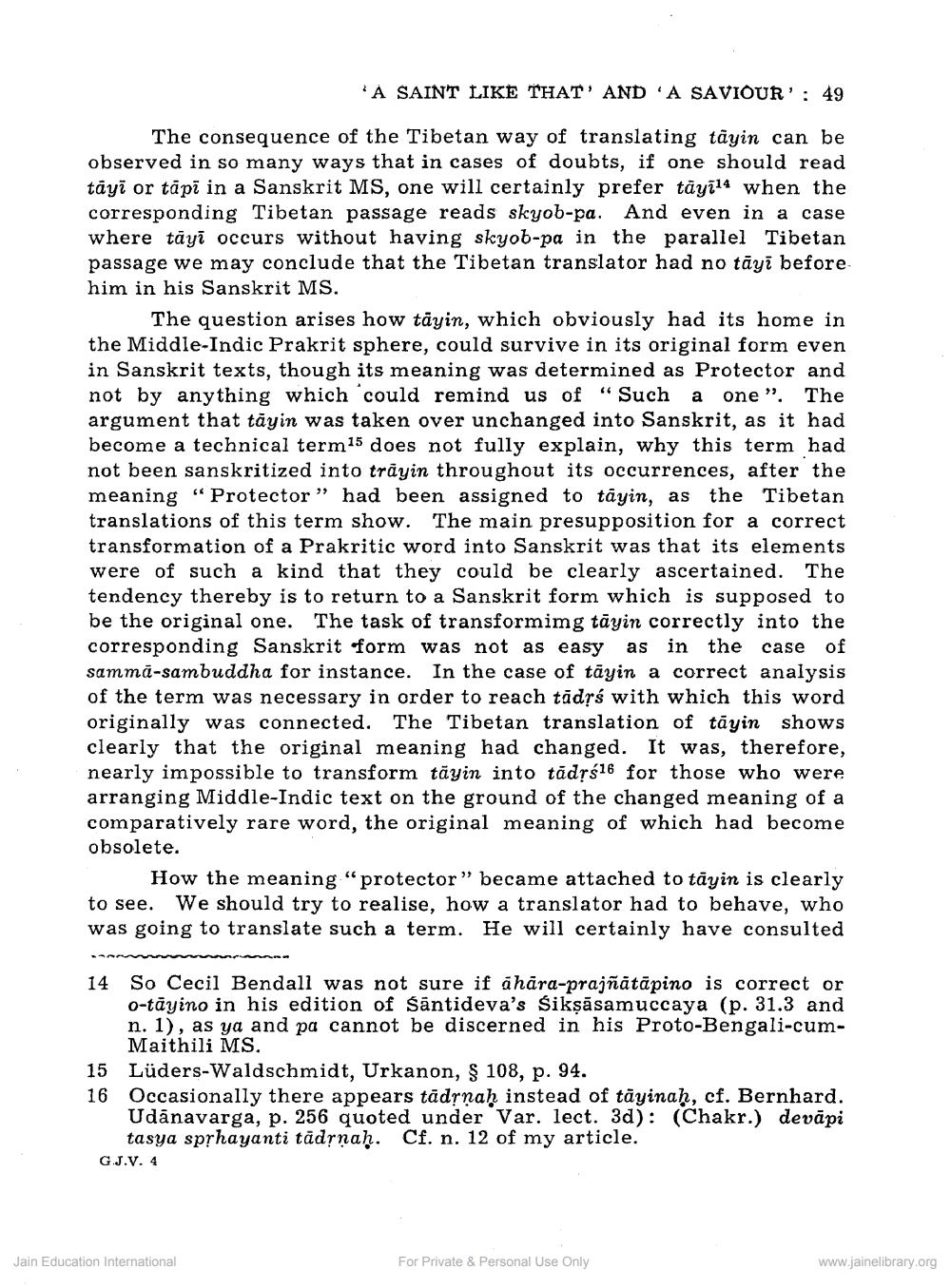________________
'A SAINT LIKE THAT' AND A SAVIOUR' 49
The consequence of the Tibetan way of translating täyin can be observed in so many ways that in cases of doubts, if one should read tâyi or tapi in a Sanskrit MS, one will certainly prefer täyī when the corresponding Tibetan passage reads skyob-pa. And even in a case where täy occurs without having skyob-pa in the parallel Tibetan passage we may conclude that the Tibetan translator had no täyi beforehim in his Sanskrit MS.
The question arises how täyin, which obviously had its home in the Middle-Indic Prakrit sphere, could survive in its original form even in Sanskrit texts, though its meaning was determined as Protector and not by anything which could remind us of "Such a one". The argument that täyin was taken over unchanged into Sanskrit, as it had become a technical term1s does not fully explain, why this term had not been sanskritized into trayin throughout its occurrences, after the meaning "Protector" had been assigned to tayin, as the Tibetan translations of this term show. The main presupposition for a correct transformation of a Prakritic word into Sanskrit was that its elements were of such a kind that they could be clearly ascertained. The tendency thereby is to return to a Sanskrit form which is supposed to be the original one. The task of transformimg tayin correctly into the corresponding Sanskrit form was not as easy as in the case of samma-sambuddha for instance. In the case of tayin a correct analysis of the term was necessary in order to reach tādṛś with which this word originally was connected. The Tibetan translation of tayin shows clearly that the original meaning had changed. It was, therefore, nearly impossible to transform täyin into tādṛś16 for those who were arranging Middle-Indic text on the ground of the changed meaning of a comparatively rare word, the original meaning of which had become obsolete.
How the meaning "protector" became attached to täyin is clearly We should try to realise, how a translator had to behave, who was going to translate such a term. He will certainly have consulted
TRENT THAN THE ONE OF
So Cecil Bendall was not sure if áhära-prajñātäpino is correct or o-tayino in his edition of Santideva's Sikṣāsamuccaya (p. 31.3 and n. 1), as ya and pa cannot be discerned in his Proto-Bengali-cumMaithili MS.
15 Lüders-Waldschmidt, Urkanon, § 108, p. 94.
16 Occasionally there appears tādṛṇaḥ instead of täyinah, cf. Bernhard. Udânavarga, p. 256 quoted under Var. lect. 3d): (Chakr.) devāpi tasya sprhayanti tādṛṇaḥ. Cf. n. 12 of my article.
G.J.V. 4
Jain Education International
For Private & Personal Use Only
www.jainelibrary.org




